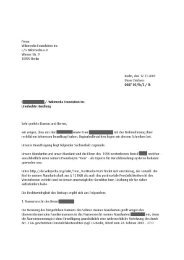Proceedings
Proceedings
Proceedings
You also want an ePaper? Increase the reach of your titles
YUMPU automatically turns print PDFs into web optimized ePapers that Google loves.
ACADEMIC TOOLS AND REAL-LIFE BUG FINDING IN WIN32<br />
instructions. This assumption does not hold in case of binaries<br />
compiled with Visual C compiler; particularly ebx, esi and<br />
edi register saving is often delayed. This sometimes created<br />
a condition where registers save and restore were not paired,<br />
resulting in stack height inconsistencies. In order to solve this<br />
problem, register save/restore instructions were disassociated<br />
from prologue/epilogue patterns, and now they are decoded<br />
generically.<br />
E. Handling of ”finally” functions<br />
The ”finally” 8 construction is implemented by Visual C by<br />
creating functions which exhibit two anomalies:<br />
1) They access the caller frame (do not save or set ebp<br />
register, and access unmodified ebp register)<br />
2) Sometimes they perform unwind operation, returning<br />
directly into its caller’s callee.<br />
These functions are detected by examining the Structured<br />
Exception Handling setup code and extracting the appropriate<br />
pointers. Currently processing of such functions is disabled.<br />
F. Register overlap handling<br />
In ia32 architecture, there are instructions which operate on<br />
8bit or 16bit parts of 32bit registers. In the C code generated<br />
by UQBT this feature is handled by defining each 32bit<br />
register as a union, consisting of a single 32bit location, two<br />
16bit locations and four eight bit locations:<br />
union {<br />
int32 i24;<br />
struct {<br />
int16 h0;<br />
int16 dummy1;<br />
} h;<br />
struct {<br />
int8 b8;<br />
int8 b12;<br />
int8 dummy2;<br />
int8 dummy3;<br />
} b;<br />
} i24;<br />
32bit register eax is modeled by i24.i24, 16bit register<br />
ax is modelled by i24.h.h0, and 8bit registers al and ah are<br />
modelled by i24.b.b8 and i24.b.b12, respectively. Obviously,<br />
any modification to e.g eax model automatically results in<br />
modification to ax model.<br />
Unfortunately, CBMC forbids access to a union member if<br />
the last operation on the union modified other member, the<br />
reason being that semantics of such operations is endiannessdependent<br />
and should be avoided.<br />
The solution is to abandon the above union trick and<br />
declare separate storage for each register. To minimize the<br />
code changes, it is enough to change the top ”union” keyword<br />
in the previous code fragment to ”struct”. Then we treat the<br />
32bit register as the primary one, and we will update registers<br />
before or after the assignment:<br />
8 a part of try-finally construction used with exceptions<br />
• before assignment - if a smaller register is in RHS, update<br />
this smaller register content with appropriate portion of<br />
the 32bit register<br />
• after assignment - if a smaller register is in LHS, update<br />
the appropriate portion of the 32bit register with this<br />
smaller register<br />
For instance, the instruction and al, 2 will be translated to<br />
/* 8bit regs in RHS update:*/<br />
i24.b.b8 = ((unsigned int)i24.i24)%0x100;<br />
/* the original assignment */<br />
i24.b.b8 = ((int32)i24.b.b8)&(2);<br />
/* 8bit reg LHS update */<br />
i24.i24 -= ((unsigned int)i24.i24)%0x100;<br />
i24.i24 += (unsigned int)i24.b.b8;<br />
The rational assumption is that non-32bit operations are<br />
much less frequent than the 32bit operations, therefore the<br />
number of the above updates will be a fraction of the number<br />
of assignments. In the analyzed case of the NWWKS.DLL<br />
binary, out of 17049 generated assignments 394 were the<br />
ones related to overlapping registers handling.<br />
G. Inlined, optimized common functions<br />
In a compiled C code, probably all occurrences of the Pentium<br />
instructions with ”rep” prefix are generated by inlining<br />
an optimized version of one of the following functions:<br />
• strlen<br />
• memcpy<br />
• memset<br />
It is beneficial to replace code fragments implementing above<br />
functions with calls to an appropriate function. UQBT includes<br />
a few patterns of such constructions, however they did not<br />
match the code generated by VC compiler. Appropriate support<br />
has been added.<br />
V. ADDING CHECKS FOR INTEGER OVERFLOW IN MEMORY<br />
ALLOCATION<br />
The following algorithm was used to generate assertions<br />
which check for integer overflow in memory allocation:<br />
• locate all occurrences of calls to functions which allocate<br />
memory; LocalAlloc and GlobalAlloc functions are handled<br />
by default, other memory allocation functions can<br />
be specified in a config file<br />
• execute find and annotate algorithm with arguments:<br />
the function actual parameter determining the size of<br />
allocated memory, and the address of the code where the<br />
function is called<br />
The algorithm find and annotate(sem str, code address)<br />
performs the following steps:<br />
• if the sem str is a constant, exit<br />
• starting at the instruction with the address code address<br />
in the control flow graph, trace back through all execution<br />
paths looking for an assignment A whose left hand side<br />
is related (see the next two points) to sem str<br />
19 |






